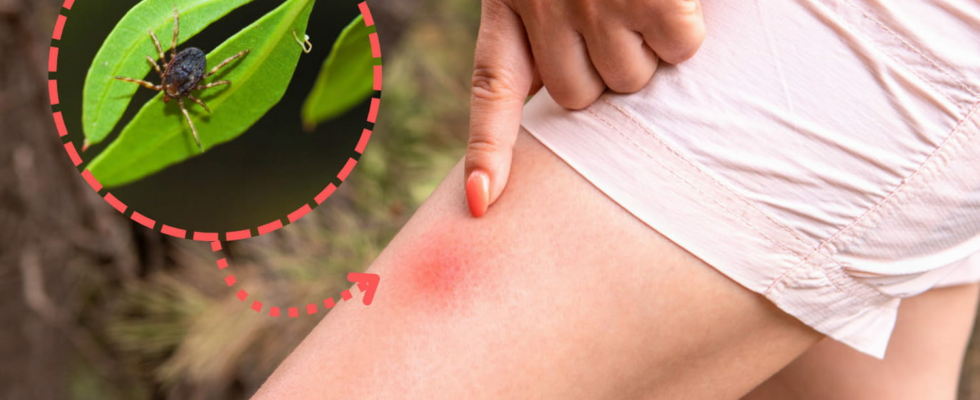It is present in 11 French departments.
Be very careful of it in your garden or on your holiday destination. With its two-tone striped legs and its size that can reach 1 cm, this insect must be monitored, insist the health authorities who fear its proliferation and its risk of fatal infection for humans.
Discovered for the first time in France in October 2023, this species of mite, called Hyalomma marginatum by scientists, is a potential carrier of the Crimean-Congo hemorrhagic fever (CCHF) virus, an infection that can cause fever, muscle pain, dizziness, digestive symptoms in humans, and in the most severe forms, uncontrolled bleeding (hence its name) as well as rapid deterioration of kidney and liver function.In this form, the disease is fatal in 5 to 30% of cases, with death occurring most often during the second week of the disease.“, he wants to clarifyPastor Institute.
This insect is a so-called “giant” or “striped-legged” tick (alternating red-brown stripes and “whitish” rings at the joints: see the photo below). It is a different and larger species (3 mm long compared to 8 mm) than the best-known tick (Ixodes ricinus) which is likely to transmit Lyme disease or the tick-borne encephalitis virus. For the moment, the giant tick is only present in 11 departments in the South of France and Corsica: Hérault, Gard, Aude, Pyrénées-Orientales, Bouches-du-Rhône, Var, Alpes-Maritimes, Ardèche, Drôme, Corse-du-Sud and Haute-Corse. But with global warming, the distribution area of the giant tick will probably expand to mainland France in the coming years.
If “the risk of contamination has now been demonstrated, no human case has been diagnosed in France to date“, however, reassures Public Health Francewhich, in the middle of the summer season, would like to remind people of the good preventive measures, especially in the tick’s favorite places (dry areas of scrubland and maquis, pastures, hiking trails, fields, crops, orchards, vineyards, etc.):

- Wear clothing that covers your legs and arms, preferably light-coloured, to make it easier to see the tick.
- Wear closed shoes
- Inspect your body and that of your children, for example when showering and returning from a walk
- Have a tick remover or fine tweezers available to quickly remove the tick in case of a bite.
Skin repellents have limited effectiveness, their use should not replace the preventive measures mentioned above. In the event of a tick bite (giant or not) and after removing it (with a tick remover or fine tweezers) and disinfecting the bite site, photograph the tick if you can. Within two weeks after the bite and if you suddenly report one of the symptoms mentioned above, consult a doctor, indicating that you have been bitten by a tick and showing him the photo.
“We study its installation, its ecological niche, and its tolerance to various temperatures, humidities, rainfall regimes, to understand the factors that explain its extensionexplain Laurence Vial and Frédéric Stachurski, veterinarians and parasitology researchers at the Center for International Cooperation in Agricultural Research for Development (CIRAD), at Parisian. This is why we are interested in any reports made by breeders or individuals who recognize her.”
